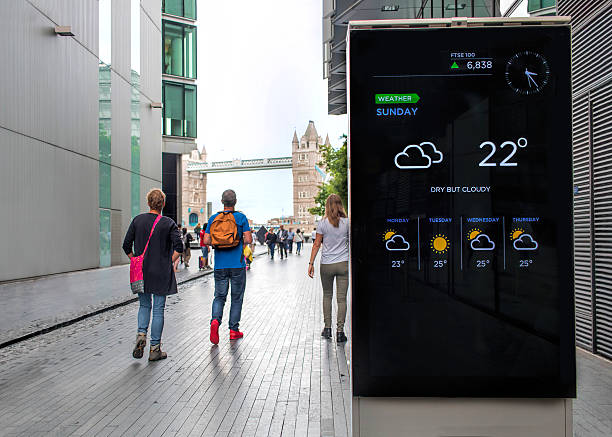Think about having a 4K display at the entrance of your lobby—but it is frozen on the previous day’s slide. The issue isn’t the screen. It is the brain behind it: the digital signage player. Get this one right, and your content is crisp, up-to-date, and on time every time.
A digital signage media player (sometimes known as a digital signage player) is a small, dedicated computer that can drive one or more displays with dynamic data. Here, you will know how the players work, what types are available, what specifications are important, and how to select hardware that suits your purpose, so that your digital signage solution will work perfectly.
Whether you’re exploring corporate digital signage or a restaurant menu board, getting the right player is step one. Nento provides complete solutions that just work.
What a Digital Signage Player Actually Does
Consider the player as a business-grade, safe, and secure streaming box for your screens—but more capable and controllable than a consumer device.
Core functions
- Access and store content in your CMS (images, videos, HTML5, data feeds, and social embeds).
- Decode and render media with ease at the desired resolution (FHD/4K), respecting frame rates and color profiles.
- Plan what, where, and when to play—per location, screen, or daypart.
- Track and display health, storage, temperature, and playback so operations teams can be in control.
Critical difference: the digital signage media player is hardware. The CMS you access is software. They collectively make your digital signage solution.

Why the Player Matters More Than You Think
Reliability & performance
The dedicated digital signage hardware is developed with 24/7 operational capabilities, playback of 4K content, and network predictability, much more than a hacked laptop or USB drive.
Security
Hardened OS builds, secure boot, kiosk mode, and restricted ports are features maintained by commercial players and are imperative in deploying digital signage in the enterprise and corporate setting.
Remote management
The top digital signage companies are pairing players with cloud dashboards to reboot, update, push content, and diagnose—no on-site visit needed.
Scalability
The right player and fleet tools enable you to expand from a single store to a multi-region network of thousands of digital signage players.
Types of Digital Signage Players: Which One Fits Your Use Case?
1) Android Digital Signage Players
Pros: economical, compact size, energy efficient, huge Android digital signage application, and peripheral ecosystem.
Cons: The quality may vary among vendors; cheaper components may choke with heat or video.
Ideal for: Menus, promo loops, information boards, single/dual display, and most retail/hospitality applications.
Nento Note: Our Android digital signage player offerings are tested to be stable, video-performing, and remotely managed.
2) Windows-Based Players
Pros: Powerful; supports desktop-level analytics, CAD viewers, complicated HTML/JS applications, or old Windows software.
Cons: More expensive and power hungry; bigger chassis; more complicated patching.
Ideal for: heavy data visualization, interactive kiosks, sophisticated wayfinding, and multi-output video walls.
3) Proprietary / WebOS / Tizen / Built-In Players
Pros: Occasionally built into the workplace; reduced number of cables/gadgets; clean installations.
Cons: Feature sets differ; you can be locked into one vendor’s ecosystem; some models have limited headroom on the GPU.
Ideal for simple single-screen applications with uniformity and minimal hardware being the primary concern.
How to Choose: A Practical Checklist
Performance needs
Content mix: low-bitrate images or 4K video or heavy HTML5 widgets.
Multi-screen: Do you require two outputs, mosaic layouts, or a video wall?
Future headroom: prepare more complicated playlists in the future.
Connectivity
Video: HDMI 2.0 and 2.1 or DisplayPort 4K60; EDID support; HDCP (where required).
Network: Stable Ethernet; fallback Wi-Fi; optional LTE remote locations.
Peripherals: USB, GPIO, Bluetooth, touch overlays, sensors, and payment devices (on kiosks).
Operating system
Android (lean, efficient), Windows (flexible, heavy apps), or display OS (WebOS/Tizen). Align OS to the complexity of the apps and IT standards.
Form factor & environment
Stick, mini-box, rack-mount, or slot-in. Take into account airflow, mounting, cable routes, and ambient heat (enclosures, cabinets, window bays).
Management & security
Works with your CMS? Supports secure boot, kiosk mode, lockdown policy, device whitelisting, and signed updates?
Support & warranty
Continuity is important with business-grade SLAs, advanced-replacement options, and vendor roadmaps.
Choosing hardware can be overwhelming. Let Nento’s experts guide you. We’ll help you select the perfect player for your goals and budget.
The Nento Advantage: More Than Just Hardware
Seamless integration
Nento players are shipped ready to pair immediately with the Nento CMS. No drama provisioning, no deviations in the policies, and rapid rollouts, which are the key to a coherent digital signage solution.
Robust & reliable
Our certified components are 24/7 operation, 4K playback, thermal stability, and long service life in retail, QSR, transportation, and corporate digital signage.
Effortless remote management
Using one dashboard, you can update firmware, push playlists, schedule reboots, and even check the health of your entire fleet of digital signage players.
Scalable for any business
Between a single Android digital signage endpoint and a global network across regions and brands, Nento can scale without re-architecting your stack.

Power Your Vision with the Right Foundation
Your screens are only as smart as the device feeding them. The right digital signage player will guarantee smooth playback, bulletproof performance, and stress-free upgrades—so your content can do its job: inform, engage, and convert.
Ready to build a reliable and impactful digital signage network? Start with Nento. Explore our solutions, get a quote, or chat with our team today to find the perfect digital signage media player for your business.
FAQs
Can’t I just use a USB stick or an old laptop?
That is testable but not safe in the factory. Specialized digital signage hardware can be stable, secure, remotely controlled, and 24/7 reliable, which consumer equipment cannot.
What’s the difference between a player and the software?
The hardware that is plugged into your screen is the digital signage player. The CMS (software) is where you create/plan the content and send it to the player. They are your digital signage solution together.
How do I update content on the player?
You do not actually touch the player. Make updates in the CMS (e.g., Nento), and the content/schedules are automatically updated over the network.
Are all Android players the same?
No. Components, thermals, and firmware are diverse. Nento provides superior models of Android digital signage players that are tested to be stable and compatible with CMS.
How many screens can one player drive?
Most drive 1–2 screens at 1080p/4K. Video walls can be powered by higher-end units with multiple outputs (or capture/sync) based on bandwidth and depending on the GPU.





